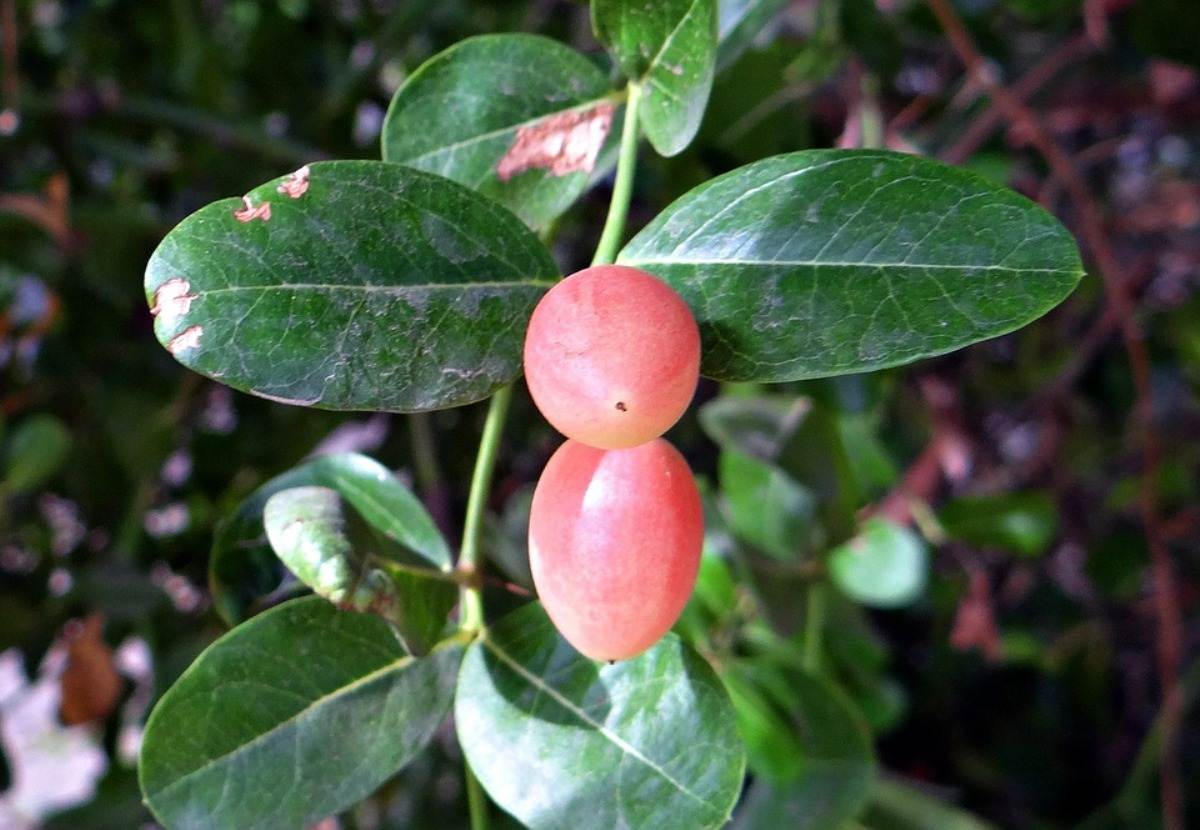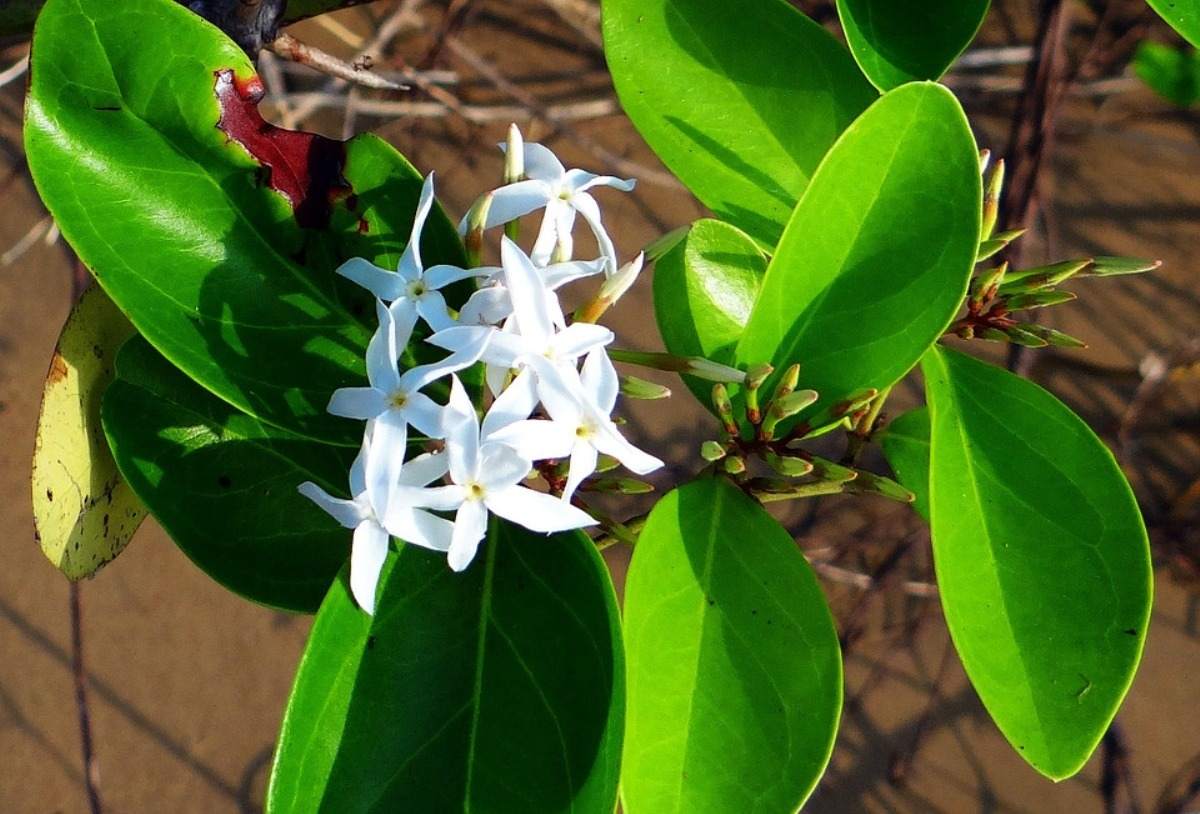Introduction: Carissa carandas growing shrub of the genus Carissa also known as Karonda. Karonda is a perennial evergreen plant also used as a spiny ornamental plant that can grow in the tropic Mediterranean or subtropical climate. Karonda is a species of flowering shrub in the dogbane family, Apocynaceae.
A step by step guide to Growing Carissa carandas in home garden
Very attractive when in fruit, the plant is often grown in the home garden both as an ornamental and for its fruit in tropical and subtropical areas. Carissa carandas has good nutrition value. It is rich in iron, the fruits contain vitamin C and it is antiscorbutic and very useful for the cure of anemia. Carissa carandas fruits are used in many ayurvedic formulations and us to their nutritional values. The extract of the root is mainly used for Chest pain.
Carissa carandas plant description
Carissa carandas is a climbing shrub or small tree usually growing 3 to 5 meters tall and the stems are armed with simple or branched, sharp spines.
The leaves of the Carissa carandas are evergreen, elliptical or oval arranged opposite to each other and measure anything between 2.5 cm and 7.5 cm in length.
The fruits of karonda are small and appear in clusters, with each cluster comprising anything between 3 and 10 berry-like fruits. The fruits are round, broad-ovoid or oblong and each measure anything between 1.25 and 2.5 cm in length.
This species is a rank-growing, straggly, woody, climbing shrub, generally growing to 10 or 15 ft (3-5 m) high, sometimes ascending to the tops of tall trees; and rich in white, gummy latex. The branches, numerous and spreading, forming dense masses, are set with sharp thorns, up to 2 in (5 cm) long, in pairs in the axils of the plant leaves. The plant leaves are evergreen, opposite, oval or elliptic, 1 to 3 inches long; dark-green, leathery, glossy on the upper surface, lighter green and dull on the underside. The flowers are tubular with 5 hairy lobes that are twisted to the left in the bud instead of to the right as in other species.
You should not miss the Vastu for Planting Trees at Home.

The Carissa carandas is a sprawling semi-vine shrub native to India. Leaves are from one-and-a-half to two-and-a-half inches long, dark green, shiny and opposite and they have large spines like many other Carissas. If the leaves or stems are injured, the white milky sap is seen, which is a feature of this group of plants. Carissa carandas can be kept clipped into a shrub; it prefers to act much like a vine similar to bougainvillea and will climb to the tops of rather tall trees. Carissa carandas fruit size is variable, but most fruits are about three-quarters of an inch in diameter with a few seeds. Fruits generally occur in clusters somewhat resembling large purple grapes. Fruit quality is very excellent in this author’s opinion, somewhat resembling that of blueberry in flavor. Carissa carandas fruits can be eaten fresh or used for jellies or jam.
Varieties of Carissa carandas
There are 2 distinct varieties of Carissa carandas are available;
- Carandas var. Amara – This variety fruit has oval, dark-purple, red-fleshed fruits, of acid flavor.
- Carandas var. Dulcis – This variety fruit has round, maroon, with pink flesh and sweet-sub acid flavor.
Suitable climate for growing Carissa carandas
Carissa carandas is a handy fruit. It can be grown successfully in tropical and subtropical climate plant growth is affected in high rainfall areas and waterlogged areas. High temperatures and arid climate are suitable for growing Carissa carandas. Temperature climate with high frost and snowfall areas are not suitable for this Karonda fruit.
Soil requirement for Carissa carandas
Carissa carandas is grown successfully on a wide range of soil types that are sandy loams, laterite, alluvial sand, and calcareous soil even it is found growing well in stony, rocky and less fertile soils. However, better growth and higher yield are obtained in alluvial sandy loam soils with good drainage. The performance of orchards is poor on clay soil with poor drainage. The Karonda can be grown in wide ranges of soil pH ranging from 5.0 to 8.0.
Propagation of Carissa carandas
Carissa carandas are propagated through seed propagation and vegetable propagation methods such as cutting, layering, and budding.
You may also like the Preparing Soil for Vegetable Garden.

Carissa carandas plants can be multiplied through seed very easily. Seed propagation is mostly used methods in Karonda. The seed must be collected immediately after harvesting. The seeds sown immediately after extraction give higher germinated and seeds are shown in trays and these seedlings are transplanted in polyethylene bags at 3-4 leaf stage. The plants are because ready for planting in 8 to 10 months. The germination in seedless or less seeded varieties is low and the plants produced from seeds have a lot of variability for fruit size, color, taste, etc. Therefore it is not preferred for multiplication of varieties and elite lines.
Carissa carandas planting
The Carissa carandas plant is grown from seed sown in August and September. Vegetative propagation is practiced in the form of budding and inarching. Cuttings could also succeed. Plants raised from seed begin bearing two years after planting.
Fertilizer for growing Carissa carandas
For best growth, fertilize Carissa carandas three to four times a year with a general-purpose fertilizer containing all micronutrients.
Watering Carissa carandas plant
Carissa carandas plants need water, but the watering amount varies in different plants. Watering must be in an optimum amount for plant’s healthy growth.
For proper watering, find the type of soil and type of soil drainage favorable for the particular plant. Watering is one of the main factors of Carissa carandas care. A caring gardener must always know the amount of water needed for respective plants. Watering Carissa carandas requirements are as follows;
In summer – Lots of watering
In winter – Average Water
If you have a large garden, compare and discover plants which require lots of water and you will be able to decide the irrigation method to install in your garden. For over-watering plants, drip irrigation is mainly implemented. Such methods will help to water your Carissa carandas plants in precise quantities ensuring their perfect care.
Carissa carandas growing tips
- Growing Carissa carandas best in full sunlight will also grow in semi-shade but will not fruit as much.
- Any kind of soil is fine though in its natural habitat it prefers slightly acidic soils.
- The soil has to be very well-drained and can grow in rocky soils.
- Carissa carandas plants grow very well in containers too. Choose a large container.
You can also consider to check the Growing Hydroponic Fodder.

Diseases of Carissa carandas
While taking Carissa carandas care, its diseases should be taken into consideration as it affects the health of the plant.
Pests and diseases cause harm to the Carissa carandas plant. It might be decaying of its roots, infecting plant leaves, causing yellowish color, mushy spots, and holes or infecting its stem. Diseases like fungi grow quickly by consuming nutrition from plants.
All these factors reduce the Karonda plant’s life span. If you know what type of diseases can occur to the plant, it will help you to find the right cure and reduce the harm. So, identifying the disease and curing the plant with the right type of pesticide is a basic thing every gardener should know to ensure success in gardening. Carissa carandas diseases are Aphids, Earwigs, Insects, Mildew, Red blotch, Rust and sawflies.
Harvesting Carissa carandas
Carissa carandas requires 2-3 pickings to harvest the entire crop. On average, a plant provides 3 to 5 kg fruits. Carissa carandas fruits mature 100-110 days after fruit set. At this phase, fruits develop their natural color. Fruits ripen after this stage, taking about 120 days (after fruit set) when they become soft and attain dark purple, maroon or red color.
After Carissa carandas harvesting, these are kept in shade. Undesirable or blemished Karonda fruits are sorted out. The storage life of fruits depends upon the stage of harvest. Fruits harvested at maturity can be stored for a weak at room temperature, whereas Karonda fruits harvested at the ripe stage, are highly perishable and last only for 2-3 days. Fruits can be preserved and stored for 6 months in the SO2 solution. Raw or mature fruits are the most appropriate for pickle making, which is liked very much all over India. These can be used for making jelly and candy.
You may be intersted in Shrimp Aquaculture in India.
My karonde plants are not flowering for the past 7 years. They are planted in pots kept on my terrace garden. Can you give guidance on how to make them bear fruits